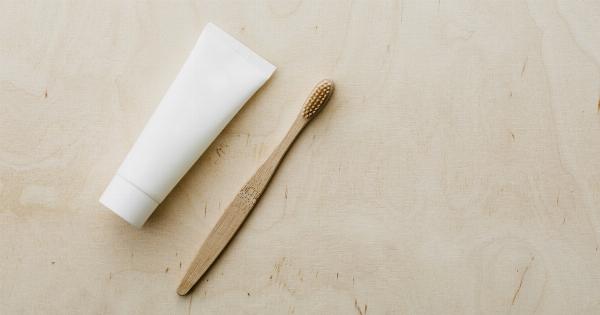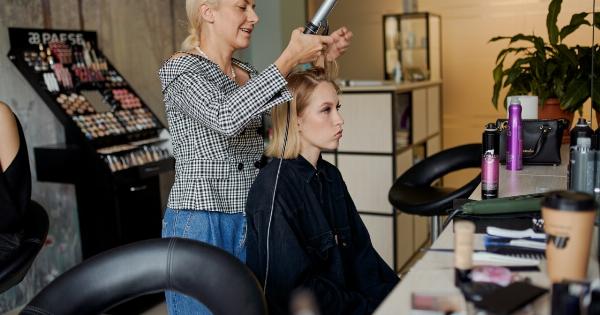Having well-groomed edges can make a huge difference in your overall hairstyle. However, many people struggle with maintaining the health and appearance of their hair’s edges.
Whether you’re dealing with thinning edges, breakage, or just want to improve the definition of your hairline, this ultimate guide is here to help. Read on to discover expert tips, techniques, and products to back your hair’s edges with confidence.
Understanding Hair’s Edges
Before diving into the specifics of how to back your hair’s edges, it’s essential to understand what exactly they are. Hair’s edges refer to the hairline around your face, more commonly known as baby hair or the kitchen.
This delicate area requires special attention and care to maintain its health and prevent any damage.
Causes of Hair’s Edges Issues
There can be several factors that contribute to hair’s edges issues. It’s crucial to identify the causes to address the problem effectively:.
1. Hairstyles
Tight hairstyles, such as braids, ponytails, or buns, can cause stress and tension on the hairline, leading to hair breakage and thinning edges. Opt for looser styles or give your hairline a break to alleviate the strain.
2. Hair Products
Using the wrong hair products can also damage your edges. Harsh chemicals, excessive heat, or heavy products can cause dryness, breakage, and thinning.
Look for products specifically formulated for delicate hairlines and avoid those with sulfates or alcohol.
3. Friction
Constantly rubbing and friction against hard surfaces, such as pillows, headrests, or even certain fabrics, can weaken the hair’s edges over time.
Use satin pillowcases or wear a silk scarf to protect your hairline while sleeping or avoid friction-causing materials.
Tips to Back Your Hair’s Edges
Now that we’ve discussed the causes, let’s explore some effective techniques and tips to back your hair’s edges:.
1. Moisturize Regularly
Keeping your hairline moisturized is essential for maintaining its health. Apply a lightweight moisturizer or natural oils, such as coconut oil or argan oil, to your edges daily. This helps to prevent dryness, breakage, and thinning.
2. Avoid Harsh Chemicals
When choosing hair products, avoid those containing harsh chemicals, such as sulfates and alcohol. These ingredients strip away natural oils, leaving your hairline dry and susceptible to damage.
Opt for gentle, sulfate-free shampoos and alcohol-free styling products.
3. Protect Your Edges During Styling
Before styling your hair in braids, ponytails, or any other updo, take the necessary steps to protect your edges. Apply a leave-in conditioner or hair protectant around your hairline to create a barrier against tension and minimize breakage.
4. Limit Heat Styling
Excessive heat can weaken your hair’s edges. If you’re using hot tools like flat irons or curling irons, set them to a lower temperature and avoid direct contact with your edges.
Instead, use heat protectant sprays and minimize your heat styling routine.
5. Practice Gentle Detangling
When detangling your hair, be gentle around your edges. Use a wide-tooth comb or your fingers to work through any knots or tangles carefully. Starting from the ends and working your way up reduces stress on your hairline.
6. Massage Your Edges
A gentle scalp massage can stimulate blood flow to your hairline, promoting hair growth and overall scalp health. Use your fingertips to massage your edges for a few minutes each day. You can also use natural oils or aloe vera gel for added nourishment.
7. Avoid Tight Hairstyles
Tight hairstyles, such as high ponytails or braids, can put excessive stress on your hair’s edges. Opt for looser styles or try variations such as low ponytails or loose braids.
Giving your hairline regular breaks from tension helps in preventing breakage and thinning.
Products for Backing Your Edges
Aside from following the tips mentioned above, using the right products can make a significant difference in backing your edges. Here are some recommended products:.
1. Edge Control
Edge control products help to smooth down and tame unruly edges while providing hold. Look for edge control gels or pomades that are non-greasy and offer long-lasting hold without causing buildup or flaking.
2. Satin Scarf or Bonnet
Using a satin scarf or bonnet while sleeping helps to protect your hairline from friction. Satin is a smooth fabric that minimizes rubbing against pillowcases and reduces the risk of damage to your edges.
3. Moisturizing Leave-In Conditioner
A moisturizing leave-in conditioner is essential for keeping your edges hydrated and nourished. Look for lightweight, non-greasy formulas that absorb quickly and don’t leave any residue.
4. Soft Bristle Brush
A soft bristle brush is ideal for styling and laying down your edges. It helps to distribute products evenly and smooth out any flyaways without causing damage or breakage.
Conclusion
Backing your hair’s edges requires adopting a holistic approach that involves proper care, gentle styling techniques, and the use of suitable products.
By following the tips and techniques provided in this ultimate guide, you can achieve healthier, more defined edges. Remember, consistency and patience are key when it comes to maintaining and regaining the health of your hair’s edges.





























